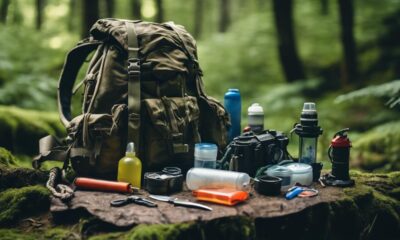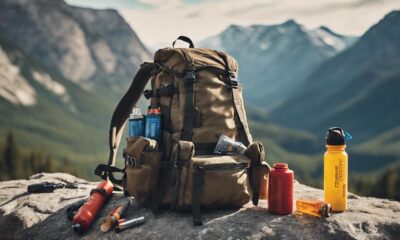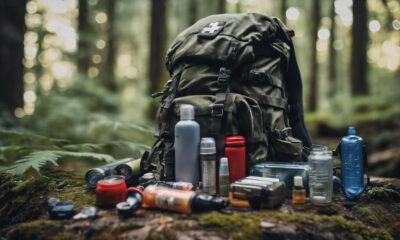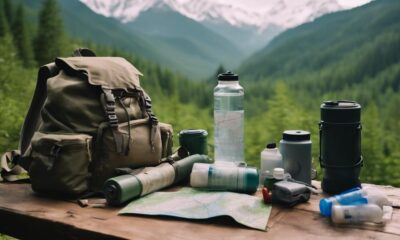Survivalism
Essential OTC Painkillers You Need Now
In search of essential OTC painkillers you need now? Discover the must-have options that will transform your pain relief strategy and keep you prepared.

For quick relief from mild to moderate pain, you need a few essential OTC painkillers. Start with acetaminophen for general pain relief. Ibuprofen or naproxen effectively tackles inflammation, while aspirin offers both pain relief and anti-inflammatory benefits. Don't forget topical analgesics like creams or patches for localized discomfort. It's wise to stock up on these options, including both single and multi-ingredient products like Excedrin for headaches. Always check labels for dosage and safety guidelines. If you want to guarantee your pain relief arsenal is complete, there's more valuable information just ahead.
Key Takeaways
- Stock up on acetaminophen for effective general pain relief from headaches, muscle aches, and fevers.
- Include ibuprofen and naproxen for their anti-inflammatory properties, ideal for managing pain from injuries and inflammation.
- Aspirin serves as a dual-purpose pain reliever, offering both pain relief and anti-inflammatory benefits.
- Consider combination products like Excedrin for targeted relief of headaches by addressing multiple pain pathways.
- Don't forget topical analgesics for localized relief from sore muscles and joint discomfort.
Overview of OTC Painkillers

When you're dealing with mild to moderate pain, over-the-counter (OTC) painkillers can be a quick and effective solution.
These medications include acetaminophen, which is great for general pain relief, and NSAIDs like ibuprofen and naproxen, which also tackle inflammation. Aspirin serves a dual purpose by alleviating pain while offering anti-inflammatory benefits.
You might also find combination products that mix acetaminophen, aspirin, and caffeine to boost effectiveness.
Topical analgesics, such as creams and patches, can provide localized relief right where you need it most.
With a variety of options available, you can choose the best fit for your specific pain, ensuring you get back to feeling like yourself in no time.
Types of Pain Relief Options

Pain relief options come in various forms, each tailored to address specific needs and preferences. You might consider acetaminophen for mild to moderate pain relief, while NSAIDs like ibuprofen and naproxen are great for inflammation.
If you need something with anti-inflammatory properties, aspirin could be your choice. For those seeking enhanced relief, combination products containing acetaminophen, aspirin, and caffeine might be ideal.
Additionally, topical analgesics like creams and patches can provide localized relief for sore muscles or joints. Understanding these options allows you to select the most effective pain relief method for your situation, ensuring you can manage discomfort efficiently and effectively.
Comparing Single and Multi-Ingredient

Steering through the world of pain relief can feel overwhelming, especially when choosing between single and multi-ingredient painkillers.
Single-ingredient options, like acetaminophen or ibuprofen, target pain effectively and allow you to control dosages easily. They're ideal for straightforward pain relief without additional complications.
On the other hand, multi-ingredient painkillers combine different ingredients to address multiple pain pathways. For example, Excedrin contains acetaminophen, aspirin, and caffeine, which can enhance relief for headaches.
If you often experience varied pain types, multi-ingredient options might provide broader relief.
Ultimately, consider your specific needs and any potential side effects. Understanding these differences can help you choose the right pain relief strategy for your situation.
Effective Stockpiling Techniques

Building an effective stockpile of OTC painkillers assures you're prepared for any unexpected health needs. Start by selecting a variety, including acetaminophen, ibuprofen, and aspirin. Don't forget to include topical analgesics for localized pain relief. Here's a simple table to help you organize your stockpile: It’s also crucial to track expiration dates and store these medications in a cool, dry place to ensure their efficacy when needed. Additionally, consider adding essential earplugs for hearing protection, especially if you anticipate environments with loud noises or need them for simple comfort during sleep. Maintaining a well-rounded stockpile will keep you ready for various health concerns that may arise unexpectedly.
| Painkiller Type | Quantity Recommended |
|---|---|
| Acetaminophen | 2 bottles (500 mg) |
| Ibuprofen | 2 bottles (200 mg) |
| Aspirin | 1 bottle (325 mg) |
Regularly check expiration dates and rotate stock to assure freshness. By maintaining a well-rounded supply, you'll effectively manage different types of pain during emergencies, making your health preparedness much more reliable.
Brand Name Vs. Generic Choices

When choosing between brand-name and generic OTC painkillers, many people find themselves weighing cost against perceived quality. Both options contain the same active ingredients, providing equal effectiveness in pain relief.
Brand-name products often rely on marketing to create the impression of superiority, leading to loyalty among consumers. However, generic painkillers usually come at a lower price, making them an appealing choice for budget-conscious shoppers.
It's crucial to evaluate your personal preferences and needs—some may prefer the familiarity of a brand name, while others might prioritize cost savings.
Ultimately, assess the effectiveness and convenience of each option, as both can effectively manage your pain without breaking the bank. Choose what works best for you!
Important Safety Guidelines

Selecting the right painkiller, whether a brand name or generic, is just one part of effective pain management. You need to be aware of important safety guidelines to avoid complications.
Always read labels for dosage instructions and stick to them. Don't exceed the recommended amount, as this can lead to serious health issues, like liver damage from acetaminophen. If you have allergies or pre-existing conditions, consult a healthcare professional before taking any medication.
Be cautious of potential interactions with other medications you're using. Store painkillers in a cool, dry place to maintain effectiveness. Regularly check expiration dates to verify safety.
Alternative Pain Management Methods

Exploring alternative pain management methods can offer effective relief without relying solely on OTC painkillers.
You might consider physical therapy, which focuses on rehabilitation to alleviate ongoing pain.
Heat and cold therapy can be beneficial too; applying heat helps soothe muscle tension, while cold packs reduce inflammation.
Herbal remedies like turmeric and ginger have anti-inflammatory properties that may ease pain.
Acupuncture is another option; many find it effective for chronic pain relief.
Ultimately, mindfulness practices such as meditation can change your perception of pain and promote relaxation.
Tips for Responsible Use

Using OTC painkillers responsibly is essential for ensuring both safety and effectiveness.
Start by reading labels carefully and adhering to recommended dosages. Don't exceed the maximum daily limits, as this can lead to serious health issues, like liver damage from acetaminophen.
It's wise to avoid mixing different painkillers without consulting a healthcare professional, as interactions can pose risks. If you have pre-existing health conditions, especially liver or kidney problems, talk to your doctor before using these medications.
Always store them in a cool, dry place, out of reach of children.
Finally, if pain persists or worsens, seek medical advice rather than relying solely on OTC options.
Frequently Asked Questions
What Are the Side Effects of Common OTC Painkillers?
When you use common OTC painkillers, you might experience side effects like stomach upset, dizziness, or allergic reactions. It's important to follow dosage guidelines and consult a healthcare professional if you have concerns.
Can I Take Multiple Painkillers at Once?
Yes, you can take multiple painkillers at once, but be cautious. Always check active ingredients to avoid overdose and consult a healthcare professional if you're uncertain about interactions or appropriate dosages for your needs.
How Long Do OTC Painkillers Take to Work?
Ever wonder how quickly OTC painkillers kick in? Generally, they start working within 30 minutes to an hour. Acetaminophen may take a bit longer, while NSAIDs usually provide faster relief for inflammation and pain.
Are There Age Restrictions for Using OTC Painkillers?
Yes, there are age restrictions for OTC painkillers. Generally, children under 12 shouldn't use certain medications without a doctor's advice. Always check labels and consult healthcare providers for appropriate dosages and safety for different age groups.
What Should I Do in Case of an Overdose?
If you suspect an overdose, call emergency services immediately. Don't wait for symptoms to worsen. Provide them with details about the substance and dosage. Follow their guidance and keep the person calm until help arrives.
Conclusion
You might think keeping a well-stocked medicine cabinet is overkill, but the truth is, being prepared for pain can save you from unnecessary discomfort. With the right OTC painkillers at your fingertips, you can tackle headaches, muscle aches, and other minor pains head-on. By understanding your options and practicing responsible use, you're setting yourself up for success. Don't wait for discomfort to strike—equip yourself with the knowledge and supplies you need to take control of your pain management today!
Survivalism
Survive Any Crisis With Key Skills
Navigate through any crisis by mastering essential survival skills; discover what could save your life when the unexpected strikes.

To survive any crisis, you need to master key skills that can make all the difference. First, verify you can find and purify water. Fire is essential for warmth and cooking, so learn different ignition techniques. Familiarize yourself with edible plants and how to catch food. Create shelter to protect against harsh weather. Stay aware of your surroundings to enhance personal security. Regular practice of these skills builds your confidence and readiness for unexpected challenges. Knowing these basics prepares you for the worst, but there's much more you can gain from further exploration of survival strategies.
Key Takeaways
- Master water acquisition techniques by locating natural sources and purifying collected water to maintain hydration during crises.
- Build effective shelters to protect against harsh weather and reduce the risk of hypothermia.
- Enhance personal security by staying aware of surroundings and utilizing non-lethal self-defense tools.
- Familiarize yourself with edible plants and foraging strategies to ensure a sustainable food supply.
- Regularly practice survival skills and emergency drills to build confidence and preparedness for unexpected challenges.
Essential Survival Skills
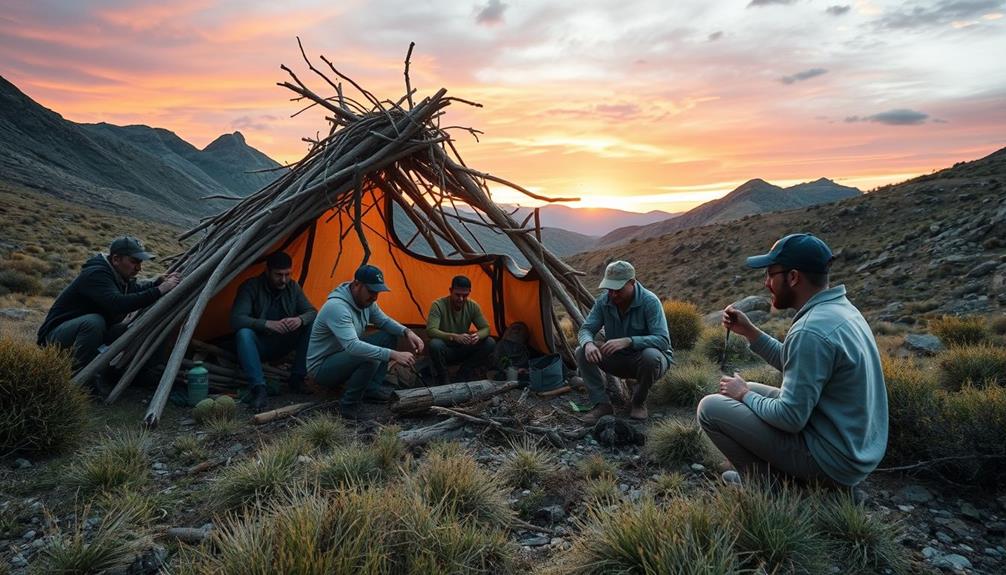
In a crisis, mastering essential survival skills can mean the difference between life and death. You must prioritize obtaining water, fire, food, and security.
Water's vital; scout for rivers or lakes and learn to purify it before drinking. Fire provides warmth and cooking capabilities, so practice various techniques to ignite it quickly.
Familiarize yourself with edible plants and foraging techniques to guarantee you have enough food. Finally, enhance your security by being aware of your surroundings and potential threats.
Carry non-lethal tools, like pepper spray, to help protect yourself. Regularly practicing these skills will prepare you for unexpected challenges and boost your confidence in survival situations.
Stay alert, adaptable, and proactive to increase your chances of survival.
Importance of Shelter

Shelter is your first line of defense against the elements in a crisis. It protects you from harsh weather and helps maintain your body temperature. Without proper shelter, hypothermia can set in quickly. When you need immediate protection, consider natural options like caves or overhangs. If you have time, you can build simple structures like lean-tos or A-frames using branches and leaves.
| Shelter Type | Key Features |
|---|---|
| Lean-to | Quick to build, minimal materials needed |
| A-frame | Sturdy, great for rain protection |
| Debris Hut | Insulated, camouflaged, and effective |
Water Acquisition Techniques
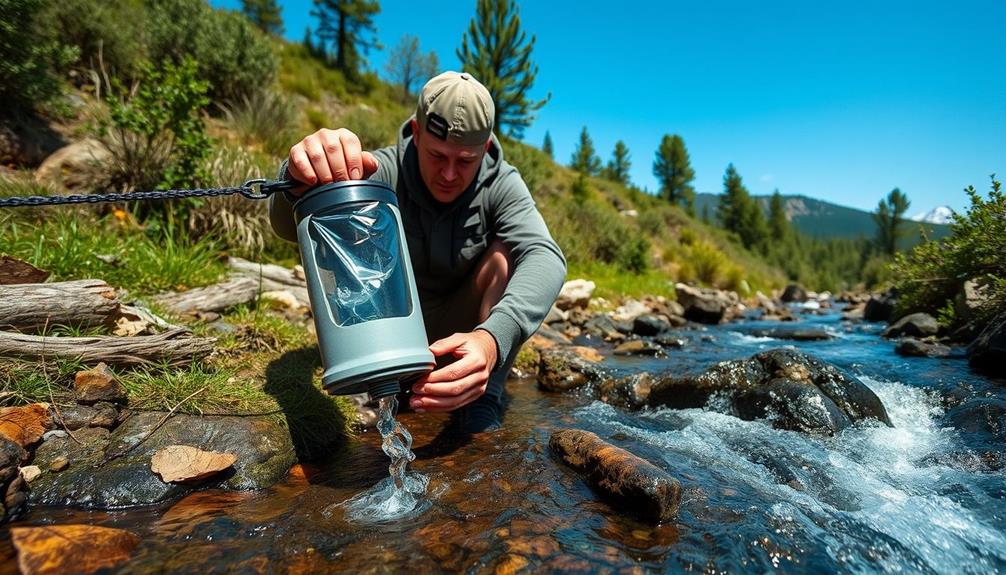
Water is often the most critical resource in a survival situation, and knowing how to acquire it can greatly impact your chances of making it through a crisis.
Start by locating natural sources like rivers, lakes, or streams, especially in forested areas. Look for signs of groundwater, such as green vegetation or animal tracks.
Collect rainwater using tarps; just one inch of rain on a 100 sq ft tarp can yield about 62 gallons.
Always purify any collected water by boiling it for 1-3 minutes, using filters, or chemical treatments. Keep clean containers handy to store your water, aiming for at least 2-3 liters daily to maintain hydration.
These techniques can be lifesavers when access to clean water is limited.
Fire Building Essentials
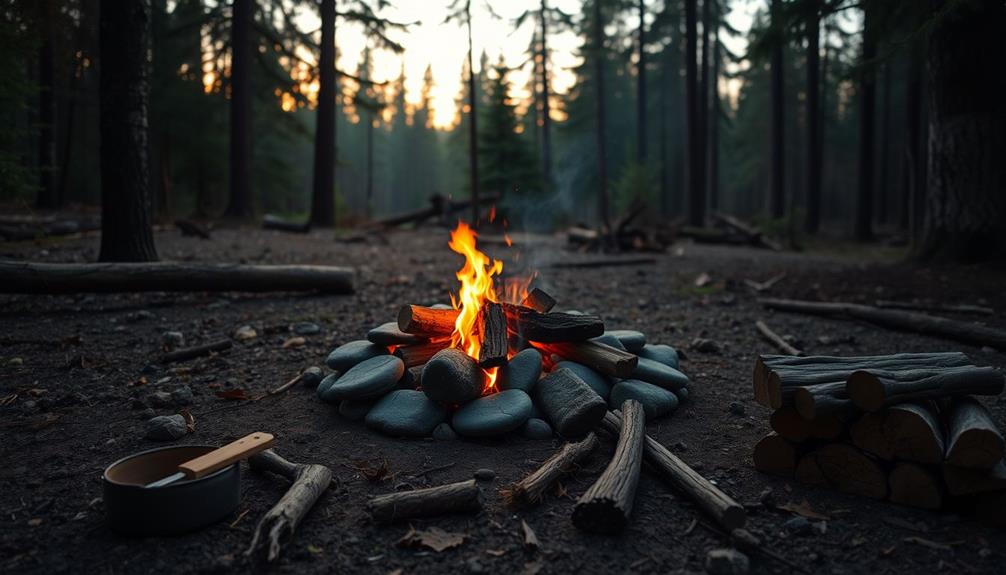
Fire serves as an essential element for survival, providing warmth, cooking capabilities, and a means to signal for help.
To build a successful fire, gather heat, fuel, and oxygen. Start with natural tinder like dry grass or bark, which ignites quickly. Use effective fire lay techniques, such as the teepee or log cabin method, to promote airflow and sustain the flame.
Always carry waterproof matches, lighters, or fire starters for ease in ignition. Prioritize safety by keeping the fire contained within a cleared area and never leaving it unattended.
After use, verify the fire is fully extinguished to prevent wildfires. Mastering these fire-building essentials can considerably enhance your chances of survival in any crisis.
Food Sourcing Strategies
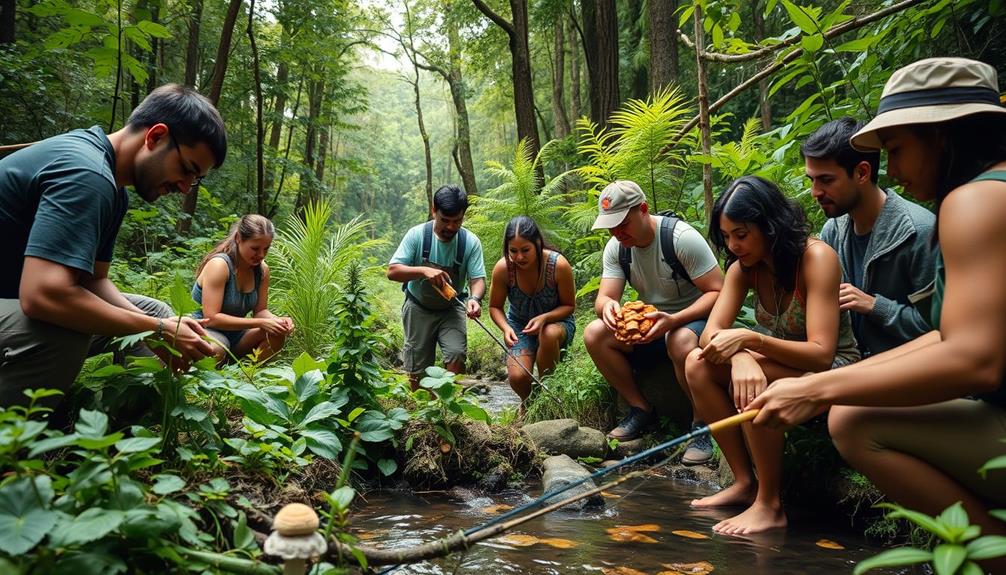
When facing a crisis, knowing multiple food sourcing strategies can greatly boost your chances of survival.
Start by familiarizing yourself with edible plants and mushrooms in your area. Forage for wild greens, berries, and nuts, but make certain you can identify them correctly to avoid poisonous varieties.
If you're near water sources, use traps or improvised hooks to catch fish. Setting snares for small game can also provide sustenance.
Don't forget about insects; they're protein-rich and plentiful.
Stockpiling non-perishable foods, like canned goods, can sustain you during emergencies.
Finally, consider building a survival garden if conditions allow, as it offers a sustainable food source.
Stay resourceful, and always be on the lookout for new food opportunities.
Personal Security Measures

After securing food sources, it's crucial to focus on personal security measures to protect yourself from potential threats during a crisis.
You need to be proactive in ensuring your safety. Here are some key strategies to implement:
- Stay Aware: Regularly scan your environment for unusual behavior or potential dangers.
- Carry Non-Lethal Tools: Equip yourself with pepper spray or a tactical flashlight for self-defense.
- Buddy System: Always travel with someone; two sets of eyes are better at spotting threats.
- Practice Self-Defense: Regularly train in basic self-defense techniques to boost your confidence and readiness.
Situational Awareness Development

Enhancing your situational awareness can greatly improve your chances of staying safe during a crisis.
Start by actively scanning your environment for potential threats or unusual behavior. Pay attention to details—notice changes in sounds, odors, or even the demeanor of people around you.
Practice the OODA Loop: Observe what's happening, Orient yourself to the context, Decide on a course of action, and Act promptly.
Use the buddy system; having someone else with you can double your awareness. Consider carrying non-lethal defense tools, like pepper spray, to boost your confidence.
Regularly practicing self-defense techniques also prepares you for unexpected confrontations.
Crisis Preparedness Mindset

Developing a crisis preparedness mindset is a proactive approach that can greatly affect your ability to respond effectively in emergencies. By embracing this mindset, you'll find yourself better equipped to handle unforeseen challenges.
Regularly updating your emergency supplies, such as a well-packed bug-out bag, can guarantee you're ready for any situation. Here are four key steps to cultivate this mindset:
- Stay Informed: Regularly educate yourself about potential risks in your area and appropriate response strategies, including understanding primitive weapons for modern survival that can enhance your self-reliance.
- Practice Scenarios: Run through emergency drills, whether it's a fire or natural disaster, to build muscle memory.
- Build a Kit: Assemble a basic emergency kit with essential supplies, ensuring it's easily accessible.
- Network: Connect with others in your community to share resources and strategies for crisis management.
Frequently Asked Questions
How Can I Improve My Physical Fitness for Survival Situations?
To improve your physical fitness for survival situations, focus on strength training, endurance exercises, and flexibility routines. Incorporate activities like hiking, swimming, or circuit training to build stamina and agility essential for traversing challenging environments.
What Psychological Strategies Help Maintain Calm During a Crisis?
During a crisis, you can maintain calm by focusing on your breathing, visualizing positive outcomes, and staying present. Remind yourself of past successes, and use affirmations to bolster confidence and reduce anxiety.
Are There Specific Tools I Should Always Carry for Emergencies?
You should always carry a multi-tool for versatility, a first-aid kit for medical emergencies, a flashlight for visibility, extra batteries for power, and a whistle for signaling help. These tools can greatly enhance your readiness.
How Can I Practice Survival Skills in My Backyard?
You can practice survival skills in your backyard by building shelters, purifying water from rain, starting fires with various techniques, and foraging for edible plants. It's a fun way to increase your preparedness!
What Should I Include in a Comprehensive Emergency Kit?
You should include water, non-perishable food, a first aid kit, flashlight, batteries, multi-tool, whistle, emergency blankets, and a portable phone charger in your all-encompassing emergency kit. Don't forget a map and essential medications!
Conclusion
By mastering these essential survival skills, you can confidently navigate any crisis life throws your way. Imagine being lost in the wilderness after a hiking trip gone wrong. With your shelter-building expertise, you quickly create a safe haven, while your water acquisition techniques guarantee you stay hydrated. Remember, preparation is key; the more you practice, the better equipped you'll be. Embrace these skills, and you'll transform potential despair into resilience and survival.
Survivalism
Top Survival Subscription Boxes for Preparedness
Find the best survival subscription boxes to enhance your preparedness journey—discover essential gear and connect with a thriving community today!

If you're looking for top survival subscription boxes for preparedness, consider options like Battlbox, TacPack, and Nomadik. These curated boxes deliver essential gear right to your door, helping you stay updated on survival tools. Prices range from budget-friendly to premium, ensuring you find something that fits your budget. Each box typically includes versatile multi-tools, first-aid kits, emergency food rations, and more, making them ideal for enhancing your preparedness. Engaging with these subscriptions not only equips you with gear but also connects you to a community of like-minded individuals. Explore further to uncover more options and insights!
Key Takeaways
- Battlbox offers a tiered subscription with essential survival gear tailored to various skill levels and budgets.
- TacPack focuses on tactical gear, perfect for those interested in survival skills and self-defense.
- Nomadik provides outdoor adventure gear, ideal for enthusiasts looking to enhance their preparedness for outdoor scenarios.
- SHTF promises a value-driven approach, delivering double the worth of subscription costs in quality survival items.
- Subscription boxes simplify sourcing essential gear, ensuring regular updates and fostering continuous learning in emergency preparedness.
Overview of Survival Subscription Boxes
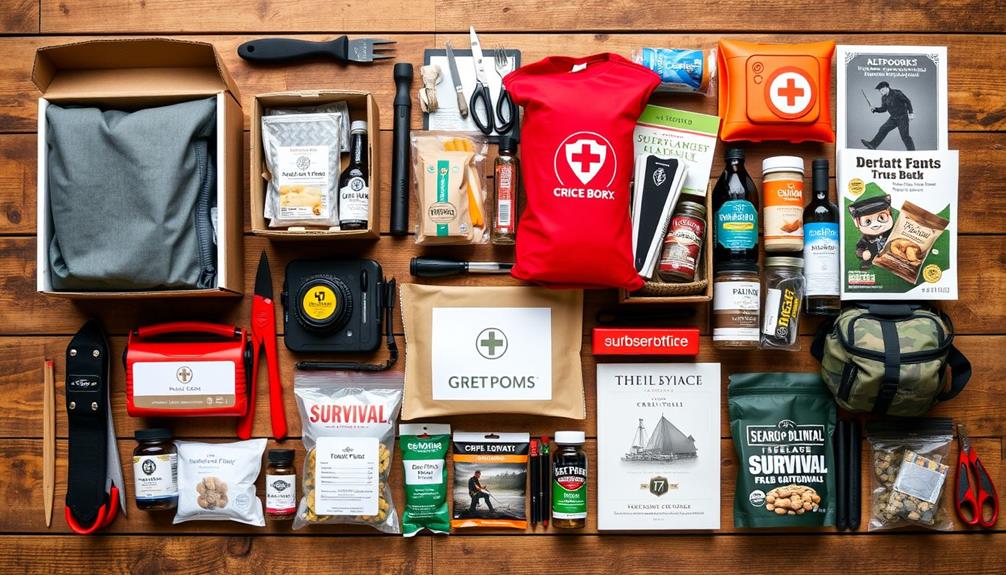
Survival subscription boxes are increasingly popular among those looking to enhance their emergency preparedness.
These curated boxes, like Battlbox, TacPack, and Nomadik, deliver essential survival gear right to your door on a monthly or quarterly basis. They simplify product discovery and guarantee you maintain an up-to-date supply of tools and supplies.
With tailored selections based on specific needs, you'll often find high-quality gear that exceeds your expectations. This practical solution not only enhances your preparedness but also keeps you engaged with ongoing gear updates.
As the popularity of these boxes rises, you'll discover new ways to stay ready for unexpected situations and improve your overall survival skills.
Importance of Emergency Preparedness
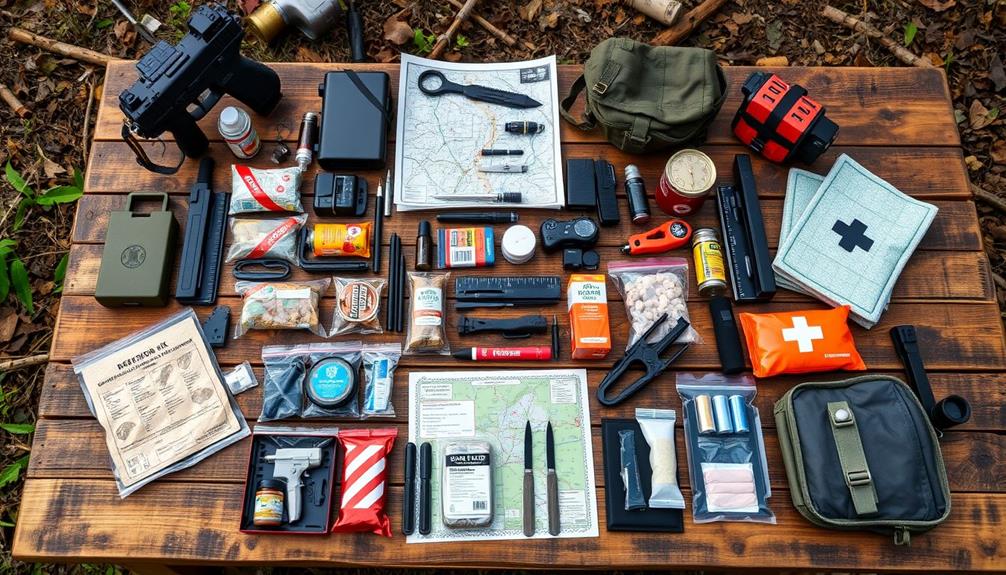
Being prepared for emergencies is fundamental for everyone, as it can make a significant difference when disaster strikes. You never know when a natural disaster, medical emergency, or unexpected event might occur, so it's essential to assess potential risks in your area.
Incorporating skills like primitive weapons for modern survival can also enhance your preparedness level. Tailoring your emergency plan to address these specific threats will set you up for success.
Assemble a well-stocked emergency kit and establish clear communication plans with your loved ones. Volunteering in local response efforts can also strengthen community ties and enhance your understanding of emergency protocols.
Regularly updating your strategies guarantees you stay ready for any unexpected situation. With over 23 million preppers in the U.S., it's clear that recognizing and closing preparedness gaps is critical for everyone.
Pricing and Value Breakdown

Many people find that understanding the pricing and value of survival subscription boxes is essential for making informed choices.
You'll discover that prices can range from budget-friendly options at around $20 to premium boxes exceeding $200. Many services, like SHTF, promise to deliver double the value of what you pay.
Brands such as Battlbox and Nomadik cater to various budgets, allowing you to select a box that fits your financial plan. By grasping the pricing structure, you can maximize your investment in preparedness.
Additionally, the quality of items, especially food supplies from trusted suppliers like Augason Farms, plays a significant role in determining overall value. Knowing what you're getting helps you make the best choice for your needs.
Types of Items Included

Exploring the types of items included in survival subscription boxes reveals a wealth of essential gear designed for emergencies.
You can expect to find multi-tools that offer versatility in various situations, making them indispensable. First-aid kits are critical for immediate medical assistance, ensuring you're prepared for injuries.
Water purification systems guarantee access to safe drinking water, a necessary resource during crises. Emergency food rations provide sustenance when traditional food sources might be unavailable.
Additionally, fire-starting kits are essential for warmth and cooking, allowing you to survive in harsh conditions. Each of these items enhances your preparedness, ensuring you have the right tools at your disposal when you need them most.
Community Engagement Opportunities

Community engagement opportunities within the survivalist domain are abundant and can greatly enhance your preparedness journey. Connecting with others who share your interests not only enriches your knowledge but also builds a strong support network.
Here are three ways to engage with the survival community:
- Join Online Forums: Participate in discussions, ask questions, and share your experiences to learn from others.
- Attend Local Meetups: Find local survivalist groups or workshops to practice skills and connect face-to-face with like-minded individuals.
- Follow Social Media Groups: Engage with survival-related content on platforms like Instagram and Facebook to gain insights and tips from fellow enthusiasts.
Choosing the Right Subscription Box

When it comes to choosing the right survival subscription box, you'll want to contemplate your personal interests and skill levels first.
Think about what areas of survival gear you're most passionate about, whether it's outdoor skills, emergency preparedness, or self-defense.
Next, consider your budget; subscription boxes range from affordable to premium options, so find one that provides value without breaking the bank.
It's also vital to research the reputation of various providers. Read reviews to understand the quality of the items and the overall customer satisfaction.
Gifting Subscription Boxes

A survival subscription box makes for an ideal gift for anyone passionate about preparedness and outdoor adventures.
Not only do these boxes provide essential gear, but they also encourage ongoing skill development and exploration of new techniques.
Here are three reasons why gifting one is a great idea:
- Curated Gear: Each box is thoughtfully selected, ensuring your recipient receives high-quality, practical items.
- Flexible Duration: Choose a subscription that lasts one month or several, allowing you to tailor the gift to fit your budget.
- Personalization: Many providers offer options to customize the box based on the recipient's interests and skill level, making it a unique and thoughtful gift.
This gift keeps on giving, helping your loved one stay prepared and engaged in their outdoor pursuits.
Benefits of Subscription Boxes

Survival subscription boxes offer numerous benefits that can greatly enhance your preparedness journey. They simplify the process of sourcing essential survival gear, ensuring you receive high-quality products regularly.
With each delivery, you get introduced to new tools and resources, which encourages continuous learning and skill development. This means you're not just gathering equipment; you're also expanding your knowledge and capabilities.
Additionally, these boxes foster community connections, as you engage with other survival enthusiasts who share similar interests. By keeping your gear updated and relevant, you enhance your overall emergency preparedness and resilience.
Ultimately, subscription boxes make it easier for you to stay equipped and informed, empowering you to face unexpected challenges confidently.
Frequently Asked Questions
How Often Are Survival Subscription Boxes Delivered?
Survival subscription boxes typically deliver monthly or quarterly. You'll receive curated gear regularly, ensuring you stay equipped for emergencies. This frequency helps you maintain preparedness and discover new tools tailored to your needs.
Can I Customize My Subscription Box Selections?
Just like a chef tailors a recipe, you can customize your subscription box selections. Many services let you choose items based on your needs, ensuring you get only what's most useful for your adventures.
Are Subscription Boxes Suitable for Beginners?
Yes, subscription boxes are perfect for beginners. They provide curated gear tailored to your needs, helping you build skills gradually. You'll discover essential tools while gaining confidence in your preparedness journey without feeling overwhelmed.
What Happens if My Box Is Damaged During Shipping?
If your box arrives damaged, don't panic. Check for any visible issues, document everything, and contact customer support immediately. They'll guide you through the process, often replacing your items swiftly, ensuring your preparedness isn't compromised.
Do Subscription Boxes Include a Return Policy?
Yes, most subscription boxes include a return policy. You should check the specific terms on their website. If you're unsatisfied with an item, contact customer support for assistance with returns or exchanges.
Conclusion
In a world filled with uncertainties, can you really afford to be unprepared? Survival subscription boxes simplify your journey to readiness, offering essential gear and resources right at your doorstep. With various options to fit your needs, you can build confidence and resilience for any situation. So, whether you're a seasoned prepper or just starting out, now's the perfect time to invest in your preparedness. Embrace the opportunity and guarantee you and your loved ones are ready for anything!
Survivalism
Best GMRS Radios for Adventure and Safety
With the right GMRS radios, your adventures can be safer and more connected—discover which models stand out for your next journey!

If you're looking for the best GMRS radios for adventure and safety, prioritize models that offer a solid range, durability, and user-friendly features. The Midland GXT1000VP4 and Midland MXT500 are great options, boasting impressive distances and NOAA weather alerts. For a compact choice, consider the Radioddity DB20-G, while Rugged Radios GMR2 provides excellent water resistance. It is crucial to select a radio with extended battery life and clear displays for easy operation in emergencies. With the right radio, you can enjoy stress-free adventures while staying connected. Keep exploring to discover more options and features that suit your needs.
Key Takeaways
- Look for GMRS radios like the Midland MXT500 for long-range communication up to 50 miles during outdoor adventures.
- Choose models with NOAA weather alerts to stay informed about hazardous weather conditions while exploring.
- Opt for durable, water-resistant radios to ensure reliable performance in harsh outdoor environments.
- Select user-friendly interfaces that facilitate quick operation during emergencies or group coordination.
- Remember to obtain the necessary GMRS license, which covers your entire family for ten years.
Overview of GMRS Radios

When you're gearing up for an outdoor adventure, GMRS radios can be a game-changer for communication and safety.
These radios operate on FCC-regulated frequencies, allowing you to communicate over long distances—up to 50 miles in ideal conditions. With their impressive output power of up to 50 watts, you can stay connected even in remote areas.
Plus, obtaining a GMRS license is straightforward; it's valid for ten years and covers your entire family without any testing.
Many GMRS models also feature NOAA weather alerts, keeping you updated on hazards while outdoors.
With privacy codes and user-friendly interfaces, GMRS radios enhance your outdoor experience by ensuring clear communication without interference, making them essential for any adventure.
Essential Features to Consider

Choosing the right GMRS radio for your outdoor adventures hinges on several essential features that can greatly enhance your experience.
To make the best choice, consider these key aspects:
- Range and Power: Look for models with higher wattage for longer communication distances, ideally up to 50 miles.
- Battery Life: Extended battery life and rechargeable options guarantee you stay powered throughout your trip.
- Durability: Choose radios with water resistance (IP67 rating) to withstand harsh outdoor conditions.
- User-Friendly Interface: Opt for models with clear displays and intuitive controls for easy operation, especially in emergencies.
Top GMRS Radio Recommendations

As you gear up for your next adventure, selecting the right GMRS radio can greatly enhance your outdoor experience and safety.
Consider the Midland GXT1000VP4, boasting a 36-mile range and waterproof design, perfect for hiking and camping.
The Midland MXT500 offers a robust 50 watts of power and NOAA alerts, ensuring you stay informed.
If you prefer something compact, the Radioddity DB20-G provides excellent range with a user-friendly interface.
For a rugged option, the Rugged Radios GMR2 features a water-repellent design and USB rechargeable battery.
Finally, the BAOFENG UV-9G combines waterproof capabilities with NOAA scanning, making it a versatile choice.
With these options, you'll be well-equipped for your adventures!
Advantages and Disadvantages
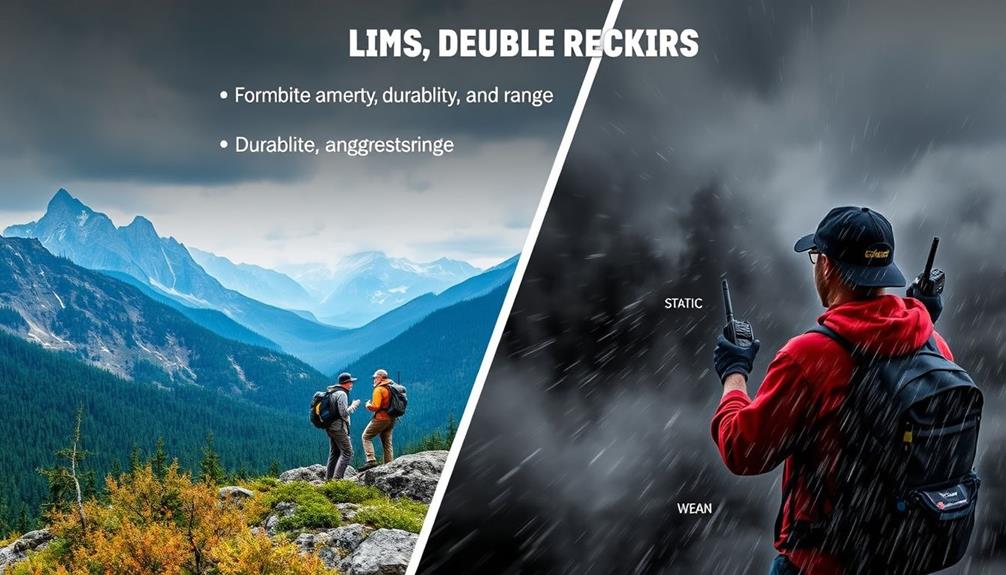
GMRS radios come with several advantages and disadvantages that can impact your outdoor experience. Here's what you should consider:
- Extended Range: GMRS radios can communicate over longer distances, sometimes up to 50 miles.
- Family Coverage: A single GMRS license covers your entire family for ten years without testing.
- Weather Alerts: Many models include NOAA alerts, keeping you informed of hazardous conditions.
- User-Friendly: Interfaces are generally intuitive, making them easy to operate even in emergencies.
On the downside, you'll need an FCC license for operation, which can be a hassle.
Battery life can also be a concern with some models, and the cost may be higher than simpler communication devices.
Practical Uses in Outdoor Activities
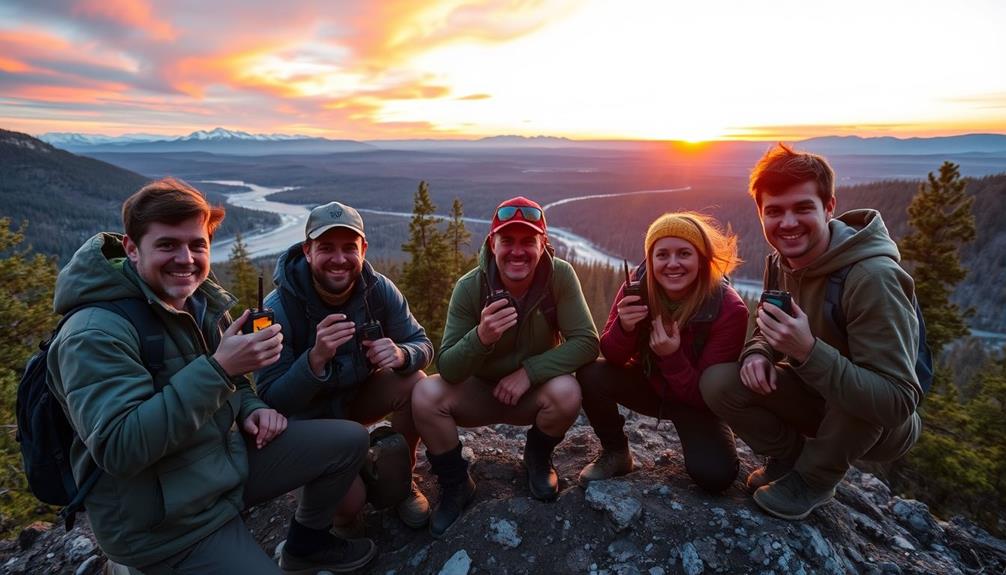
When heading out on your next adventure, having reliable communication can make all the difference. GMRS radios are perfect for outdoor activities like hiking, camping, and hunting. You can easily stay connected with your group, ensuring everyone is safe and informed.
Imagine maneuvering through a dense forest or scaling a mountain; a quick radio call can help coordinate meet-ups or alert others to potential hazards. Plus, with NOAA weather alerts, you'll receive real-time updates about changing conditions, so you can adjust your plans accordingly.
Whether you're exploring remote areas or just need to chat while setting up camp, GMRS radios enhance your outdoor experience, making adventures more enjoyable and secure.
Key Safety Benefits

Reliable communication is essential for safety during outdoor adventures, and GMRS radios deliver just that.
With their unique features, these radios greatly enhance your safety. Here are four key benefits you should consider: They provide reliable communication during emergencies, ensuring you stay connected when it matters most. Additionally, just like having the best window breakers for emergencies on hand, these radios offer peace of mind, especially in unpredictable situations. Their durability and long battery life mean they’ll be there when you need them most.
- Extended Range: GMRS radios can communicate over distances up to 50 miles, keeping you connected in remote areas.
- NOAA Weather Alerts: Stay informed about changing weather conditions, allowing for timely decisions.
- Durability: Many models are water-resistant, ensuring reliable performance in adverse conditions.
- User-Friendly: Intuitive controls and clear displays make it easy to operate, especially in emergencies.
These safety benefits make GMRS radios a must-have for your next outdoor adventure, ensuring you're never out of touch when it matters most.
Final Thoughts on Selection

Choosing the right GMRS radio can make all the difference in your outdoor adventures. First, assess your specific needs—like range, battery life, and durability.
If you often hike or camp in remote areas, opt for models with a longer range and robust features, like the Midland MXT500. Consider user-friendly controls and NOAA weather alerts, as they enhance safety during unpredictable conditions.
Don't forget to check for water resistance, especially if you'll be in wet environments.
Finally, verify you're aware of licensing requirements for GMRS radios. By investing time in selecting the right model, you'll improve your communication, safety, and overall enjoyment on your adventures.
Happy exploring!
Frequently Asked Questions
Do I Need a License to Use GMRS Radios?
Yes, you need a license to use GMRS radios. It's straightforward; apply through the FCC, and your license covers your entire family for ten years. Remember, no testing is required, making it easy for everyone!
Can GMRS Radios Communicate With FRS Radios?
GMRS radios can easily communicate with FRS radios, creating a seamless connection. You'll enjoy the extended range and clarity that GMRS provides, ensuring everyone stays in touch, whether you're scaling mountains or exploring forests.
How Do I Obtain a GMRS License?
To obtain a GMRS license, you'll need to fill out Form 605 online or via mail, pay the fee, and submit it to the FCC. There's no test required, and licenses last ten years.
What Is the Maximum Range in Urban Areas?
In urban areas, GMRS radios typically achieve a range of 1 to 5 miles due to buildings and obstacles. You'll need to take into account these limitations for effective communication while maneuvering crowded environments.
Are GMRS Radios Suitable for International Travel?
GMRS radios aren't suitable for international travel since they operate on specific U.S. frequencies. Using them abroad could lead to legal issues or interference. Instead, consider local alternatives that comply with the local regulations.
Conclusion
As you gear up for your next adventure, remember that the right GMRS radio can be your lifeline in the great outdoors. These devices are like a trusted compass, guiding you through the wild with clarity and confidence. With the ability to stay connected, you'll navigate both trails and challenges effortlessly. So, embrace the thrill of exploration, knowing that with a reliable GMRS radio by your side, you're never truly lost—just on a journey waiting to unfold.
-

 Survivalism5 months ago
Survivalism5 months agoMeal Preppers Near Me: Find Local Services and Tips!
-

 Survivalism5 months ago
Survivalism5 months agoPreppers Pack Crossword: Test Your Knowledge of Survival Gear!
-

 Survivalism5 months ago
Survivalism5 months agoInside the Secret World of Doomsday Preppers: Are You Ready?
-

 Survivalism5 months ago
Survivalism5 months agoAI Doomsday Scenario: Understanding the Potential Risks
-

 Vetted5 months ago
Vetted5 months ago15 Best Satellite Phones for Preppers: Stay Connected Anywhere, Anytime
-
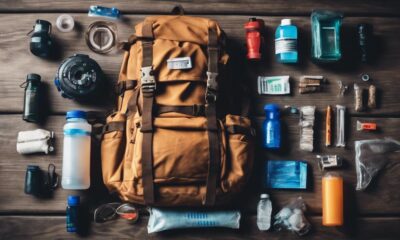
 Survivalism5 months ago
Survivalism5 months agoPreppers List of Items: Essential Gear for Every Survivalist!
-

 Survivalism5 months ago
Survivalism5 months agoFlood Survival Tactics: Essential Tips to Stay Safe
-

 Vetted4 months ago
Vetted4 months ago15 Most Durable Survival Gear Essentials for Ultimate Preparedness






